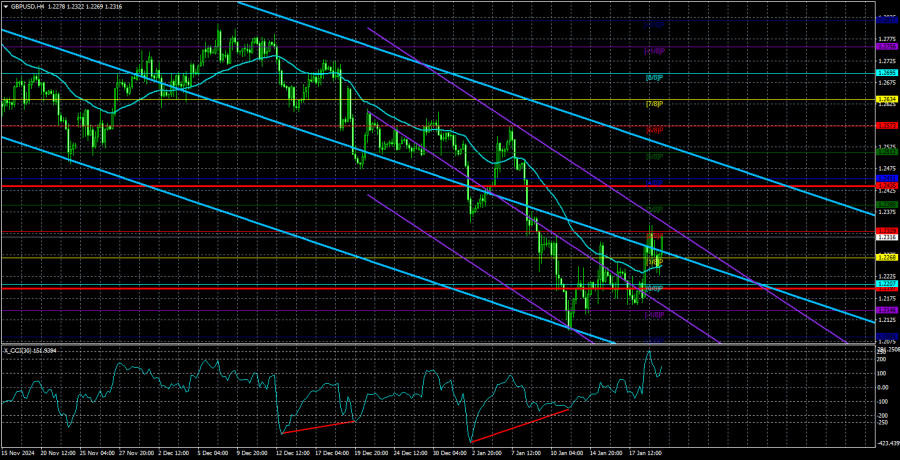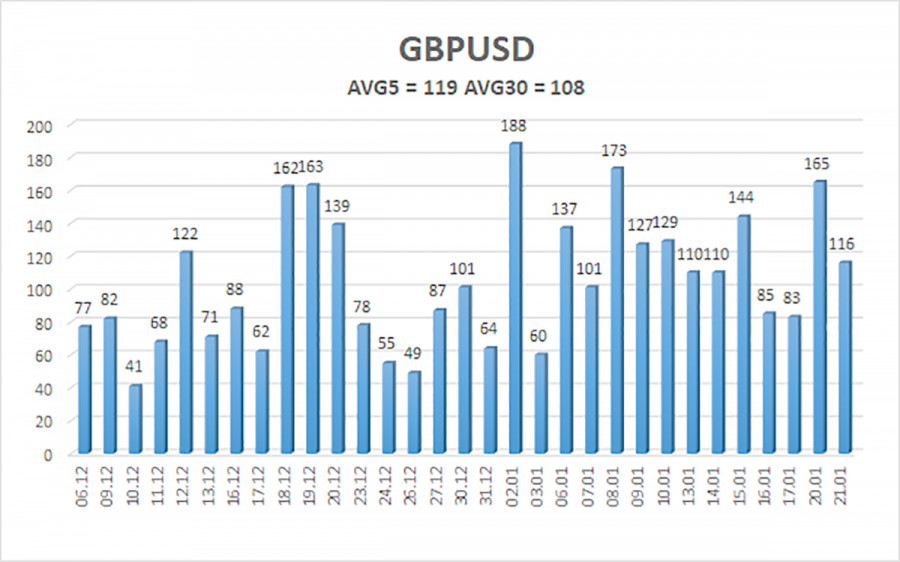यह भी देखें


 22.01.2025 01:23 PM
22.01.2025 01:23 PMGBP/USD जोड़ी का अवलोकन: 22 जनवरी – पाउंड की गिरावट और मुख्य बिंदु
मंगलवार को GBP/USD जोड़ी ने EUR/USD की गिरावट को प्रतिबिंबित किया। जैसा कि पिछले विश्लेषणों में बताया गया था, सोमवार को डॉलर की गिरावट के पीछे कोई स्पष्ट मौलिक कारण नहीं था, और एक सुधार की उम्मीद की जा रही थी।
यह समझना महत्वपूर्ण है कि हर बाजार आंदोलन के लिए एक स्पष्टीकरण नहीं होता। कई बार मूल्य में उतार-चढ़ाव बिना किसी ठोस कारण के होता है। हालांकि, आमतौर पर इनमें कुछ न कुछ तर्क होता है, भले ही वह तुरंत स्पष्ट न हो। सोमवार को यह तर्क गायब था, और हम किसी अप्रासंगिक समाचार को बाजार के मूवमेंट का कारण बताने से बचते हैं।
ब्रिटिश पाउंड अभी भी चुनौतियों का सामना कर रहा है। सितंबर 2024 में फेडरल रिजर्व द्वारा पहली बार ब्याज दर में कटौती के बाद से पाउंड और यूरो दोनों में गिरावट शुरू हुई। समग्र प्रवृत्ति 16 वर्षों से नकारात्मक बनी हुई है। जबकि कभी-कभी सुधारात्मक मूवमेंट देखे जा सकते हैं, वे मुख्य प्रवृत्ति की ओर वापसी के साथ समाप्त होते हैं।
यूके द्वारा जारी नवीनतम रिपोर्ट्स में बेरोजगारी दर में अप्रत्याशित वृद्धि दर्ज की गई, जो पूर्वानुमानों के विपरीत थी। हालांकि, वेतन में सुधार हुआ, जिससे पाउंड के लिए कुछ सकारात्मक संकेत मिले।
You have already liked this post today
*यहां पर लिखा गया बाजार विश्लेषण आपकी जागरूकता बढ़ाने के लिए किया है, लेकिन व्यापार करने के लिए निर्देश देने के लिए नहीं |
Your IP address shows that you are currently located in the USA. If you are a resident of the United States, you are prohibited from using the services of InstaFintech Group including online trading, online transfers, deposit/withdrawal of funds, etc.
If you think you are seeing this message by mistake and your location is not the US, kindly proceed to the website. Otherwise, you must leave the website in order to comply with government restrictions.
Why does your IP address show your location as the USA?
Please confirm whether you are a US resident or not by clicking the relevant button below. If you choose the wrong option, being a US resident, you will not be able to open an account with InstaTrade anyway.
We are sorry for any inconvenience caused by this message.


